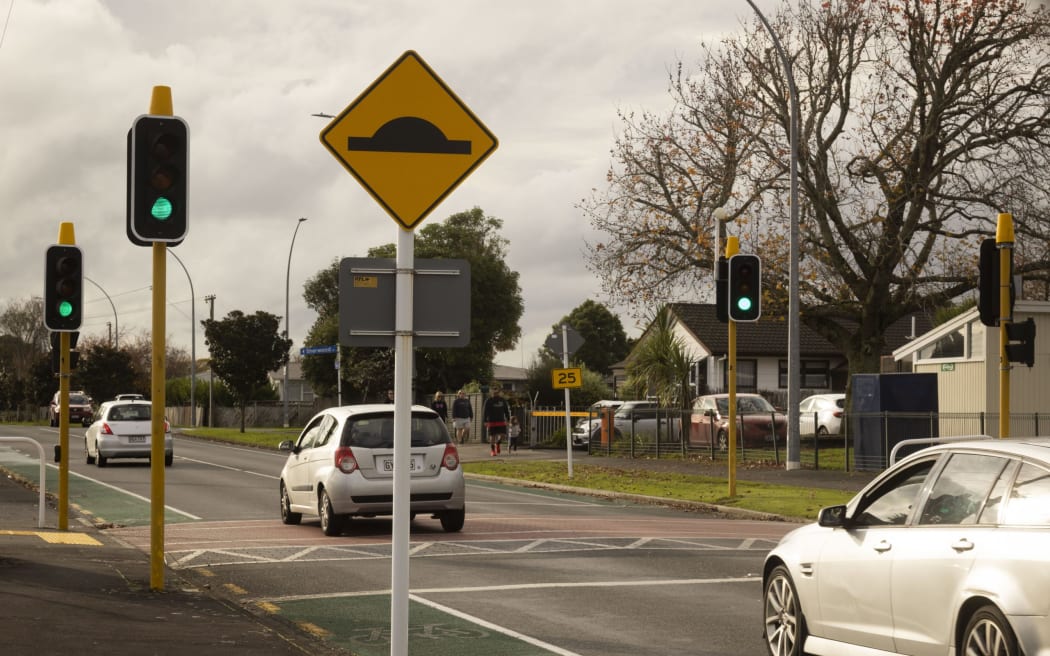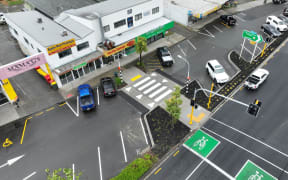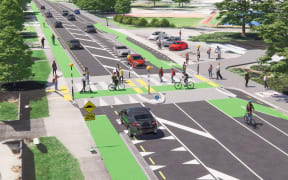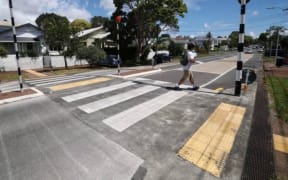
Auckland Transport will roll out a new, cheaper approach to raised pedestrian crossings in the region. Photo: Stuff
Auckland pedestrians will get flashing ground lights, traffic islands and other road safety measures to replace the heavily criticised raised pedestrian crossings on roads.
Auckland Transport (AT) came under fire for their one-size-fits all approach with the installation of raised pedestrian crossings, costing ratepayers too much.
This was despite having a range of other affordable solutions available.
Both Mayor Wayne Brown and Transport Minister Simeon Brown honed in on the costly safety upgrades.

AT customer care engagement manager Phil Wratt said depending on the situation, they would now use intelligent traffic systems, like flashing inground lights, activated by pedestrians.
Driver feedback signs, high friction surfacing, kerb build-out or a central island would also be options.
"If the residual risks of the crossing facility are still not being managed at an acceptable level, then speed management devices will be considered," Wratt said.
Wratt said they had chosen raised devices since 2020 because it slowed motorists down, and increased awareness on pedestrian crossings.
"While survivability rates will vary based on the exact street or road, Auckland Transport elected to take a preventative approach to protecting vulnerable users."
He said vulnerable users were protected from crashes with vehicles as there was a 10 percentage chance of a death, or 25 percentage chance of serious injury at 30km/h, compared to 80 percentage chance of death and a 3 percentage chance of serious injury at 50km/h.

Auckland Transport will roll out a new, cheaper approach to raised pedestrian crossings in the region. Photo: Stuff
Raised devices was the most effective intervention that could be implemented, he said.
"However, in some cases, peak vulnerable road user activity can occur at the same time as peak congestion when the network is already moving at speed considered to be safe and survivable (e.g. 30km/h).
"And in these cases a raised device may not have been necessary."
AT estimated there would be a reduction of around 30 percent of raised pedestrian crossings required compared to the current pipeline of projects.
A recent project at Kumeū, where pre-cast units were used, cost ratepayers $35,000 - approximately 10 percent cheaper than the old way.
The crossing was part of the State Highway 16 access road upgrade project, at the car park of the Main Rd shops.
The pre-cast unit was installed in one night, rather than over several days.
About 22 other crossings have been identified as suitable for the same approach.
AT infrastructure and place director Murray Burt said their priority was to keep people safe as they moved across Auckland, balanced against the cost of work to do so.
"Over the past five years, 2035 pedestrians have been killed or seriously injured trying to cross the road or walking on footpaths.
"We know that raised crossing facilities reduce the likelihood of a death or serious injury."
AT couldn't provide a figure when asked how many raised pedestrian crossings had been installed since 2020, and its costs.
LDR is local body journalism co-funded by RNZ and NZ On Air.




